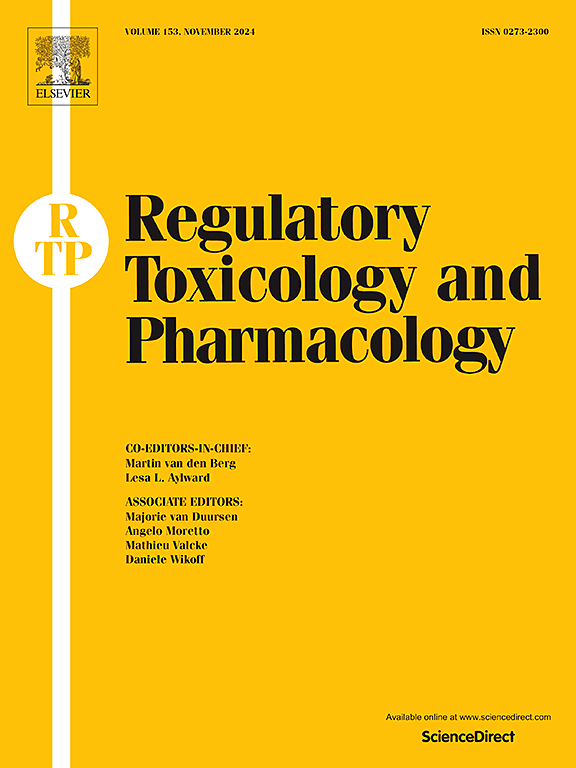Optimizing the detection of N-nitrosamine mutagenicity in the Ames test
IF 3
4区 医学
Q1 MEDICINE, LEGAL
引用次数: 0
Abstract
Accurately determining the mutagenicity of small-molecule N-nitrosamine drug impurities and nitrosamine drug substance-related impurities (NDSRIs) is critical to identifying mutagenic and cancer hazards. In the current study we have evaluated several approaches for enhancing assay sensitivity for evaluating the mutagenicity of N-nitrosamines in the bacterial reverse mutagenicity (Ames) test. Preincubation assays were conducted using five activation conditions: no exogenous metabolic activation and metabolic activation mixes employing both 10% and 30% liver S9 from hamsters and rats pretreated with inducers of enzymatic activity. In addition, preincubations were conducted for both 60 min and 30 min. These test variables were evaluated by testing 12 small-molecule N-nitrosamines and 17 NDSRIs for mutagenicity in Salmonella typhimurium tester strains TA98, TA100, TA1535, and TA1537, and Escherichia coli strain WP2 uvrA (pKM101). Eighteen of the 29 N-nitrosamine test substances tested positive under one or more of the testing conditions and all 18 positives could be detected by using tester strains TA1535 and WP2 uvrA (pKM101), preincubations of 30 min, and S9 mixes containing 30% hamster liver S9. In general, the conditions under which NDSRIs were mutagenic were similar to those found for small-molecule N-nitrosamines.
优化艾姆斯试验中 N-亚硝胺致突变性的检测。
准确测定小分子 N-亚硝胺药物杂质和亚硝胺药物物质相关杂质(NDSRIs)的诱变性对于确定诱变和癌症危害至关重要。在目前的研究中,我们评估了几种提高测定灵敏度的方法,以评估细菌反向诱变性(艾姆斯)试验中 N-亚硝胺的诱变性。使用五种活化条件进行了预孵育试验:无外源代谢活化和代谢活化混合液,其中混合液采用了用酶活性诱导剂预处理过的仓鼠和大鼠 10% 和 30% 的肝脏 S9。此外,还进行了 60 分钟和 30 分钟的预孵育。通过在鼠伤寒沙门氏菌试验菌株 TA98、TA100、TA1535 和 TA1537 以及大肠杆菌菌株 WP2 uvrA(pKM101)中测试 12 种小分子 N-亚硝胺和 17 种 NDSRI 的诱变性,对这些测试变量进行了评估。在 29 种 N-亚硝胺测试物质中,有 18 种在一种或多种测试条件下呈阳性,使用测试菌株 TA1535 和 WP2 uvrA (pKM101)、预培养 30 分钟以及含有 30% 仓鼠肝脏 S9 的 S9 混合物,可检测到所有 18 种阳性物质。一般来说,NDSRIs 诱变条件与小分子 N-亚硝胺的诱变条件相似。
本文章由计算机程序翻译,如有差异,请以英文原文为准。
求助全文
约1分钟内获得全文
求助全文
来源期刊
CiteScore
6.70
自引率
8.80%
发文量
147
审稿时长
58 days
期刊介绍:
Regulatory Toxicology and Pharmacology publishes peer reviewed articles that involve the generation, evaluation, and interpretation of experimental animal and human data that are of direct importance and relevance for regulatory authorities with respect to toxicological and pharmacological regulations in society. All peer-reviewed articles that are published should be devoted to improve the protection of human health and environment. Reviews and discussions are welcomed that address legal and/or regulatory decisions with respect to risk assessment and management of toxicological and pharmacological compounds on a scientific basis. It addresses an international readership of scientists, risk assessors and managers, and other professionals active in the field of human and environmental health.
Types of peer-reviewed articles published:
-Original research articles of relevance for regulatory aspects covering aspects including, but not limited to:
1.Factors influencing human sensitivity
2.Exposure science related to risk assessment
3.Alternative toxicological test methods
4.Frameworks for evaluation and integration of data in regulatory evaluations
5.Harmonization across regulatory agencies
6.Read-across methods and evaluations
-Contemporary Reviews on policy related Research issues
-Letters to the Editor
-Guest Editorials (by Invitation)

 求助内容:
求助内容: 应助结果提醒方式:
应助结果提醒方式:


